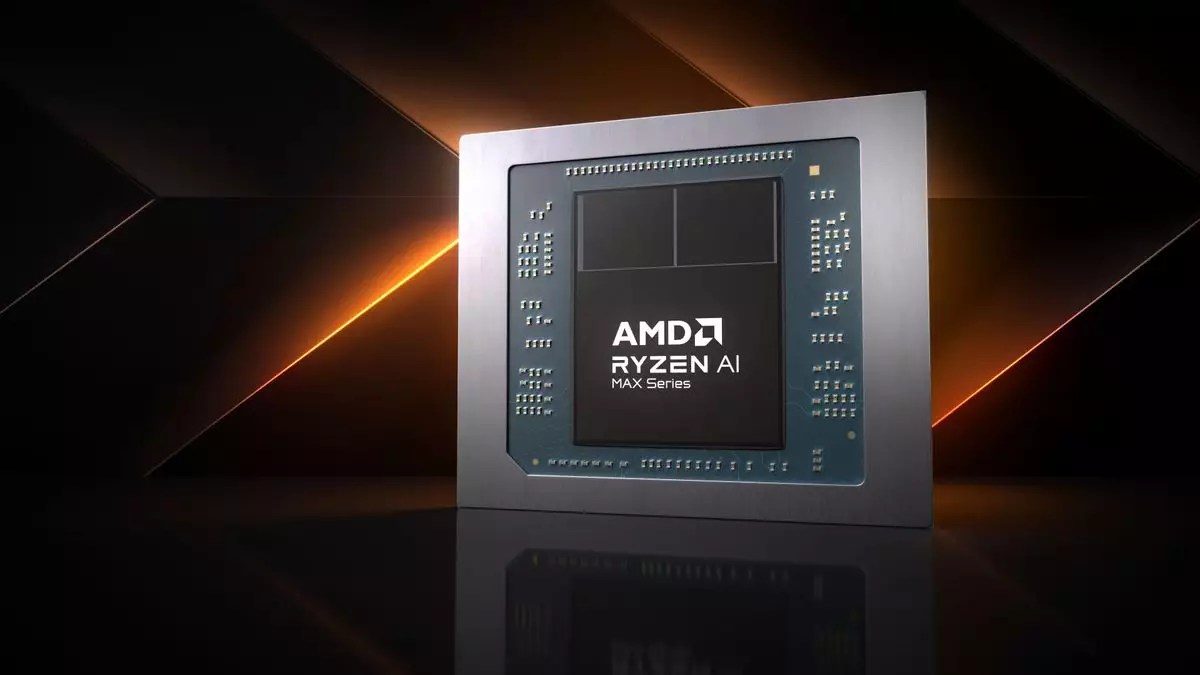In the fast-evolving world of computing technology, AMD has always been a formidable competitor, consistently pushing the envelope with their Accelerated Processing Units (APUs). The anticipation builds as their latest model, the Strix Halo, approaches its release. Recently, benchmark data has surfaced from 3DMark Time Spy, offering snippets of insight into the device’s capabilities. While the numbers present a fascinating revelation, they also unveil a reality that may not align with the previously held expectations for performance.
The recently revealed scores from 3DMark Time Spy indicate the Strix Halo’s GPU achieved a commendable score of 10,106 while the CPU racked up an impressive 5,571 points. These figures provide an early glimpse into how the new APU may perform in comparison to existing models. At a glance, this GPU score positions the Strix Halo’s integrated graphics ahead of mainstream offerings like the RTX 4050, yet it trails closely behind the RTX 4060 scores. On one hand, this suggests that AMD has designed a competitive product; on the other, it highlights that the target of matching the performance levels of discrete GPUs, such as the RTX 4070, might be out of reach.
It’s important to recognize that benchmarks like 3DMark are a piece of the performance puzzle but not the complete picture. The gaming experience encompasses a diverse range of factors, including how well the APU runs under real-world gaming conditions across various titles. The early results should, therefore, be viewed through a lens of cautious optimism rather than unbridled exuberance.
To appreciate the Strix Halo’s capabilities fully, one must examine its underlying architecture. This APU leverages AMD’s Zen 5-based CPU Complex Die (CCD), enhanced by a novel interconnection technique between the cores. Interestingly, the design reflects AMD’s journey through multiple iterations to refine what is inherently a bespoke chip. The initial underperformance in benchmarks can be attributed to this complexity as engineers endeavored to maximize both capability and efficiency.
The APU’s potential for power efficiency is a promising sign, especially for gamers who use laptops. A design that minimizes power drain typically translates into longer battery life—a critical aspect for gaming on the go. However, this configurability leads to fluctuations in performance depending on voltage settings, suggesting that users might experience a disparity in expectations versus reality based on their specific hardware setups.
AMD hinted that the Strix Halo would rival performance levels of the RTX 4070 GPU. The reality as suggested by the preliminary results, however, points more clearly toward performance akin to the RTX 4060. While still impressive, this may necessitate a reassessment of what consumers can expect from AMD’s latest offering. Those contemplating a laptop equipped with the Strix Halo might find themselves evaluating its value proposition as they consider gaming demands against the competition.
The appeal of integrated GPUs has always been their ability to balance adequate graphical performance with compact designs—perfect for portable devices. As gaming continues to shift toward more graphically intensive experiences, however, this initial performance data raises an important question: are today’s gamers willing to compromise on raw power for the convenience and efficiency that integrated solutions provide?
As we await the final launch and subsequent comprehensive reviews of the Strix Halo, the path forward for AMD is laden with both potential and challenges. The evolving expectations around integrated graphics suggest a consumer base eager for robust performance that doesn’t sacrifice efficiency or portability. If AMD can align the Halo APU with market needs, it may well set a new standard for future generations of gaming laptops and portable devices.
As the dust settles from these early benchmarks, a broader context will emerge with time. Engaging with this early information should be balanced with an understanding of its limitations. The significance of the Strix Halo lies not just in the numbers it presents but in the potential shift it may herald in the APU space.


Leave a Reply